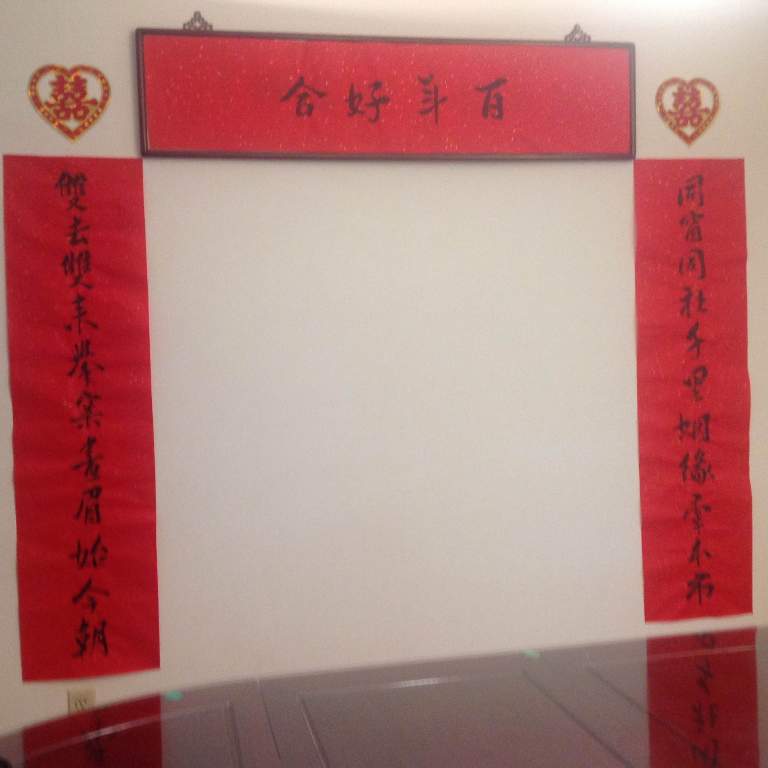
Background
Our younger son David got married to Miss Kimberly Jang on April 25, 2015 in Vancouver. For the occasion, I composed a Chinese wedding couplet with the help of a friend and then asked another friend who is a calligrapher to write it out in Chinese ink on red paper. Then I hung it in on the wall of the dining room in our house. I also prepared some explanatory notes for those who wanted them, as below.
Some thoughts that motivated the writing: the first half of the couplet tells the story of David and Kim and the Chinese legendary matchmaker; the second half contains three allusions, one by a Tang poet referring to the inseparable male and female mandarin ducks, and two traditional historical stories of love and respect between husband and wife.
The Wedding Couplet with Explanatory Notes
The 11- character (4+7) couplet:
同窗同社 千里姻緣牽本市 (1) (2) (3)
雙去雙來 舉案畫眉始今朝 (4) (5) (6)
Character by character translation:
Same – window – same – association; thousand – mile -- marriage – relations – connect – this – city
Pair – go – pair – come; raise -- tray – paint – eyebrow – begin – this – day
Translation:
Nurtured in the same colleges and association, this couple destined for each other are now joined together in this city, Burnaby.
Coming and going in pair, the traditional practice of respect and love for each other in marriage begins today.
Notes on allusions:
(1) “Same window” in literary Chinese means “same school/college”. Kim and Dave belong to the same school, same university and same association. Both live in Burnaby.
(2) There is a Chinese idiom “千里姻緣一線牽” (Two who are destined to be a couple are tied together by a string even though thousands of miles apart.) The Chinese parallel to Cupid is an Old Man in the Moonlight (月下老人) pairing men and women, tying their feet together with a red thread.
(3) 本市is literally “this city”, but the phrase is also short for “Burnaby city” (本拿比市).
(4)雙去雙來comes from a poem by the Tang poet Lu Zhao Lin (盧照鄰) (636-689):”願作鴛鴦不羡仙 ... 雙去雙來君不見? “ (We do not envy the gods; we’d rather be mandarin ducks. … Don’t you see how they always come and go in pairs?)
(5) and (6) refer to two stories in the Han dynasty (206 BC – 220 AD). “Raising the tray” tells the story of a wife Meng Guang (孟光) who held the tray of dishes level to her eyebrows when presenting food to her husband Liang Hong (梁鴻). “Drawing the eyebrows” refers to a mayor of Beijing, Zhang Chang (張敞), who was known to like to draw the eyebrows of his wife. Both stories are examples of respect and love shown towards each other in a couple. Both characters are historical figures.
The idiom across the couplet is 百年好合(hundred – year—harmonious – union; or, a harmonious union of a hundred years and more).
I drafted the couplet and my friend Mr Yu Man Po improved on the wording and form. The calligraphy is by another friend, Ms Elsie Lai Chong Lee. Many thanks are due to both of them.

